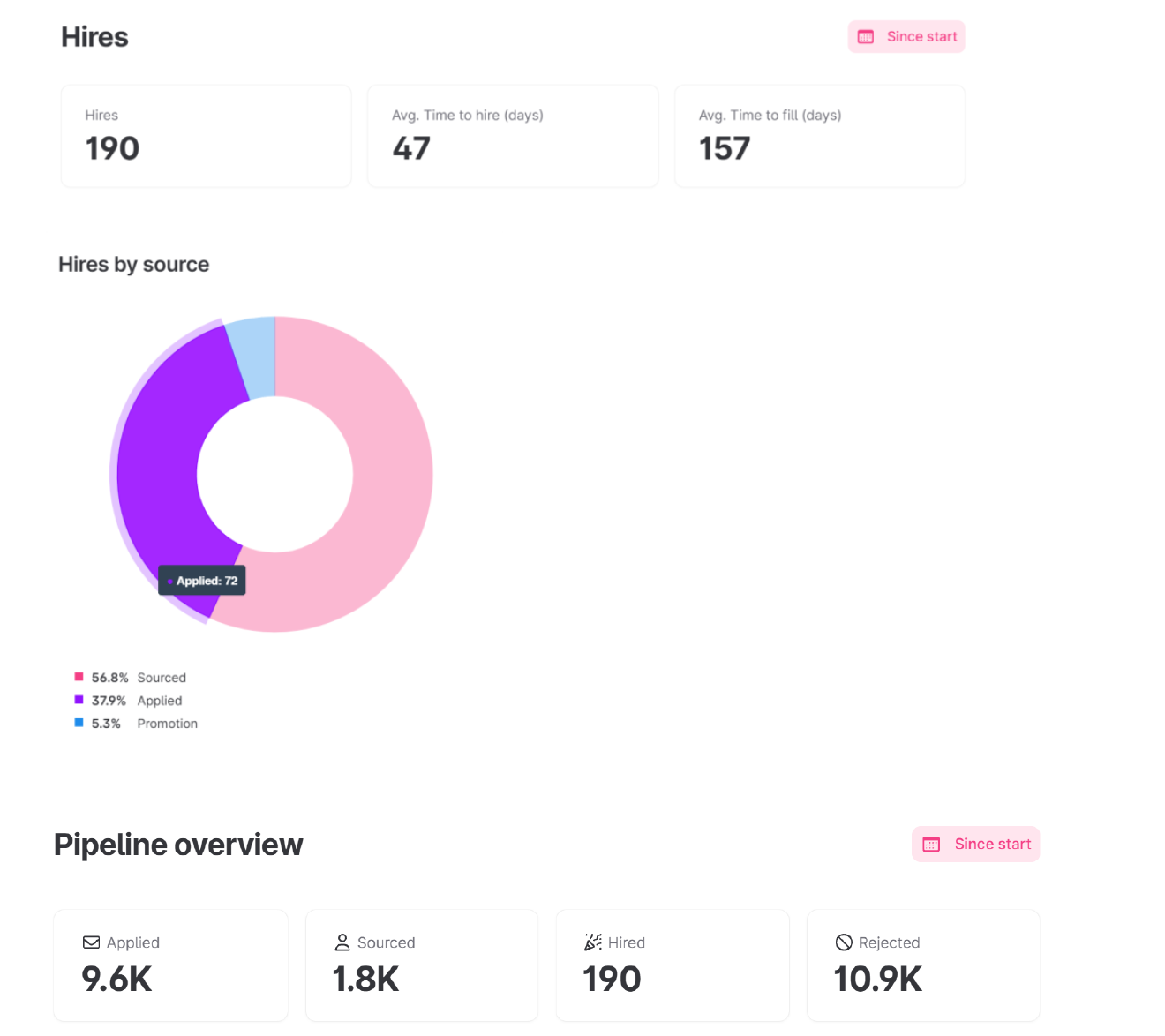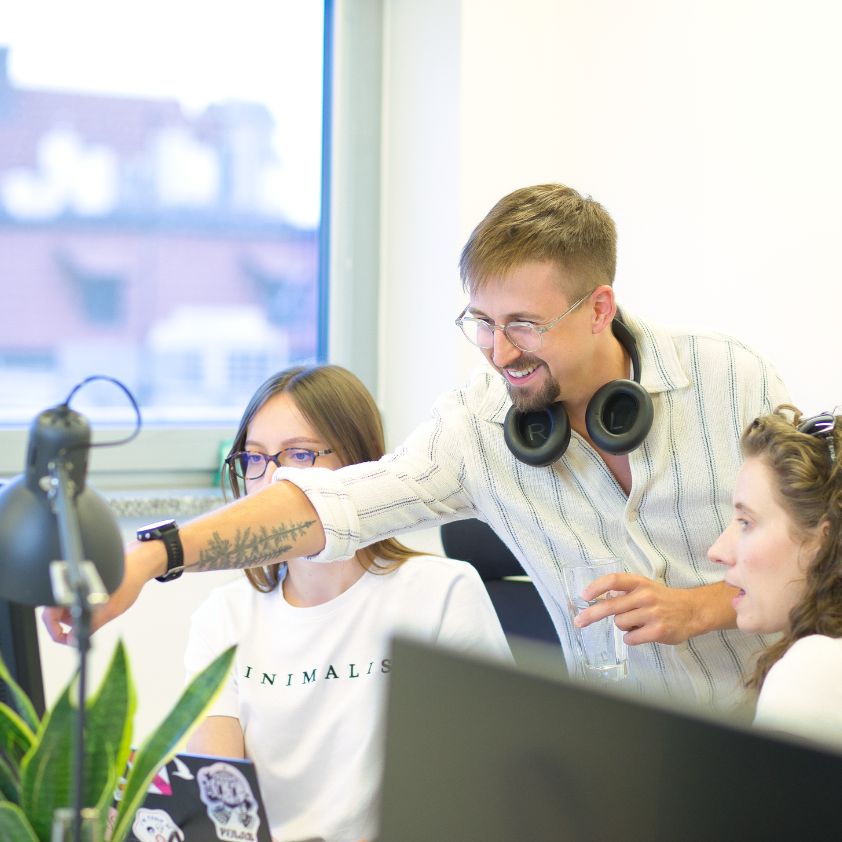
It’s Never Been Harder to Hire Great Engineers
The tech world is always changing, but one thing stays the same: the race to hire top engineering talent. For any software company, whether you’re a growing startup or a big public company, the people you hire define your success. But there’s a strange problem in hiring today. On one hand, posting a job opening can feel like opening a firehose—you get flooded with applications. On the other hand, finding the right person in that flood is harder than ever.
So many of these applications come from automated tools or from people who just aren’t the right fit. It’s a classic case of “quantity over quality,” and it’s making the old ways of hiring feel broken.
At Correct Context, we’ve spent the last four years building core IT teams for companies in Poland and Central and Eastern Europe. We’ve learned a lot about what works and what doesn’t. This article shares our findings from July 2021 to July 2025—real data on probation pass rates, retention, time-to-hire, and cost savings. We’re writing this for HR teams, engineering leads, and CEOs who are tired of the resume flood and ready to build teams that last.

Our statistics on hiring for the last 4 years

We averaged 47 days from the Job Posting to Hire
The Real Cost of a Bad Hire
The problem isn’t just about wasted time. Hiring the wrong person can seriously damage a company. The U.S. Department of Labor says a bad hire can cost you at least 30% of their first-year salary, but that’s just the tip of the iceberg [2]. The hidden costs are often much worse:
When a new hire isn’t a good fit, they won’t just be less productive themselves—they can drag down the entire team. One negative or underperforming person can hurt team morale, leading to others becoming disengaged or even quitting. Every person you hire either strengthens your culture or weakens it. A bad hire can introduce toxicity and undo the positive environment you’ve worked hard to build. And all the time and money you invest in training and onboarding? That’s gone if they don’t work out.
In today’s market, you can’t afford to make hiring mistakes. The goal isn’t just to fill a seat quickly; it’s to find the right person who will become a long-term asset to your team.
What We’ve Learned: Our Four-Year Study
Over the past four years, we’ve focused on building a smarter, more precise way to hire. We don’t just find resumes; we build complete teams. Our model includes rigorous vetting, Employer of Record (EOR) services to handle all the legal complexity, operational support, and a deep commitment to cultural fit. Here’s what our data shows.
The Numbers: What We’ve Achieved
We tracked our performance across four key metrics from July 2021 to July 2025. When we compare our results to industry averages, the difference is clear.
- A 94.2% probation pass rate means we’re getting it right from the start. Nearly every person we place passes their probation period and becomes a valued team member. Compare that to the industry average, where about one in five new hires doesn’t work out.
- Our 93.9% retention rate and 2.5-year average tenure show that people don’t just join—they stay. In an industry where engineers often jump from job to job every 18 months, keeping top talent for 2.5 years is a huge competitive advantage. It saves money on recruitment and builds stable, experienced teams that can get more done.
- We also hire faster. Our average time-to-hire is 4-6 weeks, compared to the industry standard of 6-8 weeks. Speed matters, but not at the expense of quality. We’ve proven you can have both.
Why These Numbers Matter
When you get hiring right from the start, good things happen. Our high probation pass rate is the first sign that our screening process works. We’re not just finding people with the right technical skills; we’re finding people who fit the company culture.
High retention builds on that success. When people stay longer, our clients get:
- Lower Costs: Less time and money spent on constantly recruiting, interviewing, and training new people.
- Higher Productivity: Experienced employees who know the systems and the team are far more productive than new hires still getting up to speed.
- Stronger Teams: Stable teams work better together. They build trust and a natural rhythm that makes collaboration seamless.
- Knowledge That Stays: When an employee leaves, they take valuable knowledge with them. High retention keeps that knowledge right where it’s needed.
The Economics: Real Cost Savings
One of the biggest advantages we offer is access to Poland’s exceptional talent pool at a fraction of Western costs. Our data shows clear savings.
Salary Data from Our Teams (2025)
Here’s what we’re seeing in terms of compensation for the engineers we’ve hired:
- Average Salary (All Levels): 282,925 PLN / $76,927 USD per year
- Median Salary (All Levels): 262,950 PLN / $71,496 USD per year
- Average Salary (Senior Engineers): 349,050 PLN / $94,907 USD per year
- Median Salary (Senior Engineers): 326,075 PLN / $88,660 USD per year
Compare this to the average US engineer salary of around $160,000, and you’re looking at savings of $108,000 per engineer, per year. For a team of 140 engineers, that’s $10 million in annual savings.
These aren’t just numbers on a spreadsheet. These savings allow companies to reinvest in product development, marketing, and growth initiatives. And because the cost of living in Poland is lower, these salaries provide an excellent quality of life for our engineers, contributing to high job satisfaction and retention.
Why Poland? The Talent Behind the Numbers
So, why Poland? Over the last decade, the country has become one of Europe’s biggest tech hubs. It has over 650,000 tech professionals—the largest talent pool in Central and Eastern Europe [3]. And this isn’t just about numbers; it’s about quality.
Polish developers are consistently ranked among the best in the world. They regularly place in the top tiers of global coding competitions, holding the #5 position at Google Code Jam and ranking 7th on TopCoder [3]. This talent is supported by a strong education system, with over 60 universities offering excellent technical programs, including internationally recognized institutions like the Warsaw University of Technology and Wrocław University of Science and Technology [3].
The country also has a booming startup scene, with over 3,000 startups and 14 “unicorns” (startups valued over $1 billion), including well-known names like ElevenLabs, DocPlanner, and LiveChat [3]. Poland’s IT services market is projected to reach $31.59 billion in 2025, representing 4.5% of the country’s GDP [3]. This creates a dynamic environment where engineers are constantly learning and growing.
The major tech hubs—Warsaw, Kraków, Wrocław, and the Tri-City area (Gdańsk, Gdynia, Sopot)—offer access to world-class talent, robust infrastructure, and vibrant innovation ecosystems. This is where we find the engineers who power our clients’ success.
How We Do It: Our Approach
Our success isn’t just about looking in the right place; it’s about how we hire. Our approach goes far beyond what a traditional recruitment agency does.
1. Rigorous Vetting and Cultural Alignment
Everything starts with understanding what our clients need. We don’t just look at job descriptions; we dig deep into company culture, technical requirements, and long-term goals. Then we use a multi-stage evaluation process that tests for both technical skills and cultural fit.
We only present candidates who are a great match on every level. This is why our probation pass rate is so high. Cultural alignment is just as important as technical ability. Even the most skilled engineer will struggle if they don’t fit the company’s values and communication style. Our emphasis on cultural fit is a key factor in our high retention rates—when people feel connected to their company’s mission, they stay.
2. Employer of Record (EOR): We Handle the Complexity
Hiring internationally can be a legal and administrative nightmare. Different countries have different employment laws, tax regulations, and compliance requirements. We solve this by acting as the Employer of Record (EOR).
This means we handle all the legal paperwork, payroll, benefits administration, tax compliance, and intellectual property rights. Our clients get to hire the best talent in Poland without needing to set up a local entity or become experts in Polish labor law. It’s a simple, compliant way to build a global team. The EOR model also provides flexibility—clients can scale their teams up or down as needed without long-term commitments or overhead.
3. Full Operational Support
Our support doesn’t stop once the contract is signed. We provide new hires with everything they need to be productive from day one, including office space, equipment, and ongoing HR support. This allows our clients to focus on what they do best—building great products—while we handle the day-to-day logistics of team management.
This comprehensive support model is especially valuable for startups and growing companies that may not have the resources or expertise to manage international teams effectively. We provide a turnkey solution that minimizes risk and maximizes the likelihood of success.
References
[1] Orosz, G. (2025, October 7). State of the software engineering jobs market, 2025: what hiring managers see. The Pragmatic Engineer. Retrieved from https://newsletter.pragmaticengineer.com/p/state-of-the-tech-market-in-2025-hiring-managers
[2] U.S. Department of Labor. (n.d.). The Cost of a Bad Hire. Retrieved from https://www.dol.gov/
[3] Panchuk, M. (2025, July 7). Technology and IT Industry in Poland in 2025. Alcor. Retrieved from https://alcor-bpo.com/poland-technology-sector/


